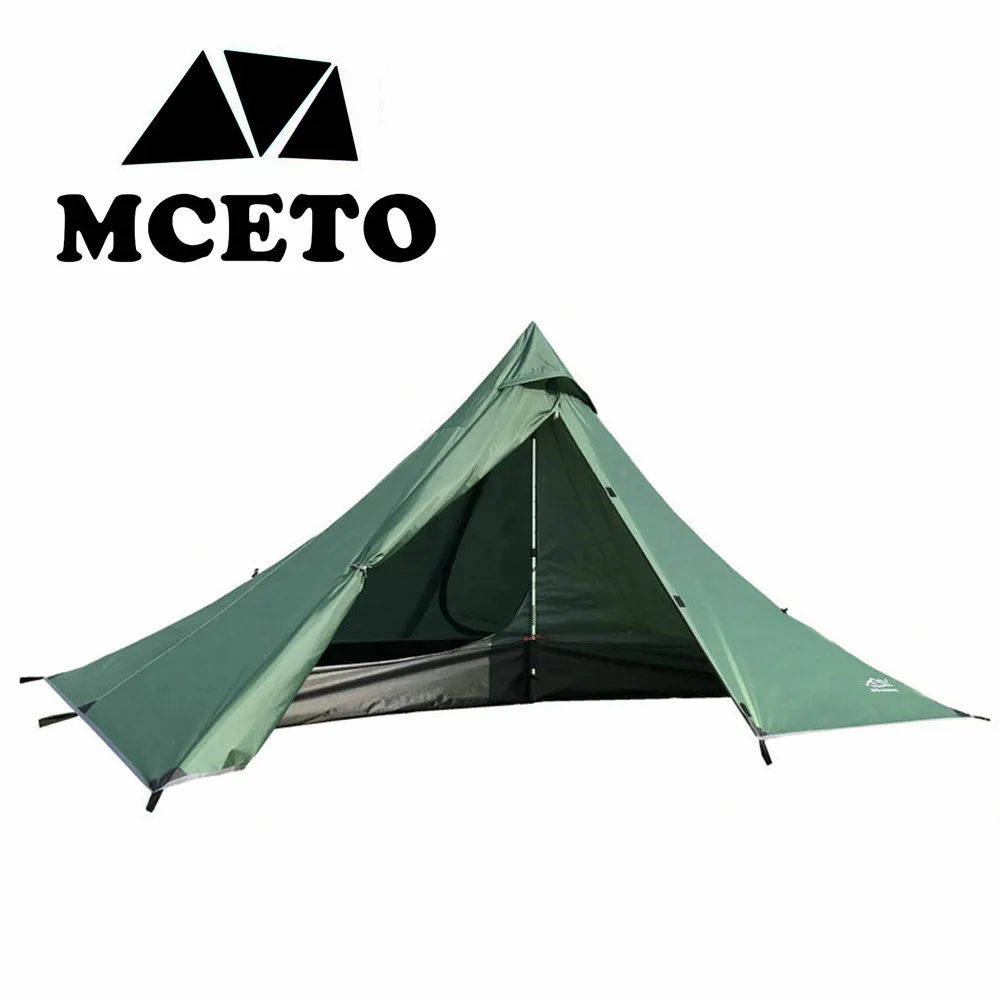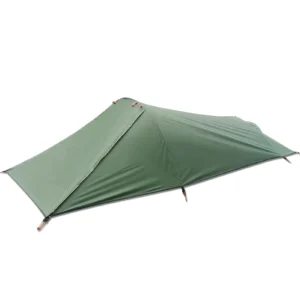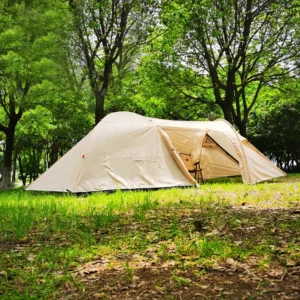What is a Tent Vestibule? Definition and Basic Functions
A tent vestibule is a covered extension area that projects outward from the main body of a tent, typically created by an extended rainfly or additional fabric panels. Think of it as your tent’s porch or mudroom – a transitional space between the outdoors and your sleeping area that provides additional sheltered space without adding significant weight or bulk to your backpacking setup.
Most vestibules are made from the same waterproof materials as the rainfly, designed to withstand the elements while protecting the tent entrance. They’ve evolved significantly in modern tent designs, transforming from simple awnings to highly functional spaces that enhance the overall usability of backpacking shelters.
Key characteristics of tent vestibules include:
- Protected area outside the main tent body but under waterproof cover
- Usually supported by the tent’s pole structure or additional stakes
- Typically features a separate zippered entrance
- Creates a buffer zone between the interior sleeping area and the outdoors
Vestibules come in various configurations, including front-entry designs (extending from the main door), side vestibules (along the length of the tent), and dual vestibule setups (one at each entrance for easier access). Understanding the fundamentals of tent vestibules helps backpackers make informed decisions about which design best suits their needs.
5 Core Benefits of Tent Vestibules for Backpackers
Tent vestibules provide several significant advantages that can transform your backpacking experience:
Extended Usable Space – A vestibule adds approximately 8-12 square feet (0.7-1.1 square meters) of protected space without the substantial weight penalty of a larger tent. This additional area makes a remarkable difference in comfort, especially during multi-day trips.
Weather Protection – Vestibules shield your gear and the tent entrance from rain, snow, and morning dew. This protective barrier prevents water from entering your sleeping area when entering or exiting during storms.
Interior Space Maximization – By relocating backpacks, boots, and cooking gear to the vestibule, you free up valuable interior space. A two-person tent becomes much more livable when you’re not sharing the sleeping area with muddy gear.
Enhanced Cleanliness – The transition zone created by a vestibule dramatically reduces the amount of dirt, mud, and debris that makes it into your sleeping area, keeping your sleeping bag and pad cleaner throughout your trip.
Improved Ventilation Control – Vestibules create options for managing airflow, allowing you to maintain some protection while increasing ventilation to minimize condensation buildup.
For those looking to enhance their outdoor experience, exploring the comprehensive advantages of tent vestibules can help you understand why this feature has become standard on most quality backpacking shelters. Many backpackers find that specialized tents with thoughtfully designed vestibules significantly improve their wilderness accommodations.
Gear Storage: Maximizing Space and Protecting Equipment
Effective gear storage is perhaps the most valuable function of a tent vestibule. When properly organized, even a modest vestibule can dramatically improve your backpacking experience.
Large Item Storage
A standard vestibule measuring 7 sq ft (0.65 sq m) typically accommodates:
* A 65-liter backpack positioned upright against the tent wall
* Hiking boots placed with soles facing outward
* Trekking poles secured along the edge
This arrangement keeps your most bulky items protected from overnight precipitation while maintaining the full interior space for sleeping and personal items.
Protection from the Elements
Vestibules provide crucial protection from:
* Rain and snow that could soak gear
* Morning dew that accumulates on items left exposed
* Splattering mud during stormy conditions
The waterproof covering ensures that essential equipment remains dry and ready to use, preventing the discomfort of packing up soaked gear or wearing wet boots.
Accessibility Planning
Strategic organization within your vestibule improves overall functionality:
* Place frequently needed items near the door for easy access
* Position less-used equipment toward the back
* Keep cooking equipment near the entrance for better ventilation
Learning proper vestibule storage techniques helps maximize this valuable space. Many experienced backpackers develop systems for organizing gear within vestibules that balance protection and accessibility, making camp life more efficient and enjoyable.
Creating a Clean Transition Zone: The Mudroom Effect
One of the most practical benefits of tent vestibules is their function as a transition zone between the dirty outdoors and your clean sleeping area. This “mudroom effect” significantly enhances comfort during extended backpacking trips.
When returning to camp after a day of hiking through muddy trails or in rainy conditions, the vestibule provides a dedicated space for:
- Removing and storing muddy footwear before entering the tent
- Shaking off excess water from rain jackets and pack covers
- Changing out of wet outer layers while remaining protected from the elements
- Brushing off dirt, pine needles, or snow before entering the main sleeping area
Many experienced backpackers enhance this transition zone by carrying a small, lightweight cloth that serves as a miniature doormat within the vestibule. This simple addition provides a clean spot to place bare feet or socks before entering the tent interior.
The result is a dramatically cleaner sleeping environment, which means more comfortable nights and less cleaning of equipment after your trip. For those seeking maximum comfort during extended outings, camping tents with well-designed vestibules offer excellent transition zones that maintain cleanliness throughout your adventure.
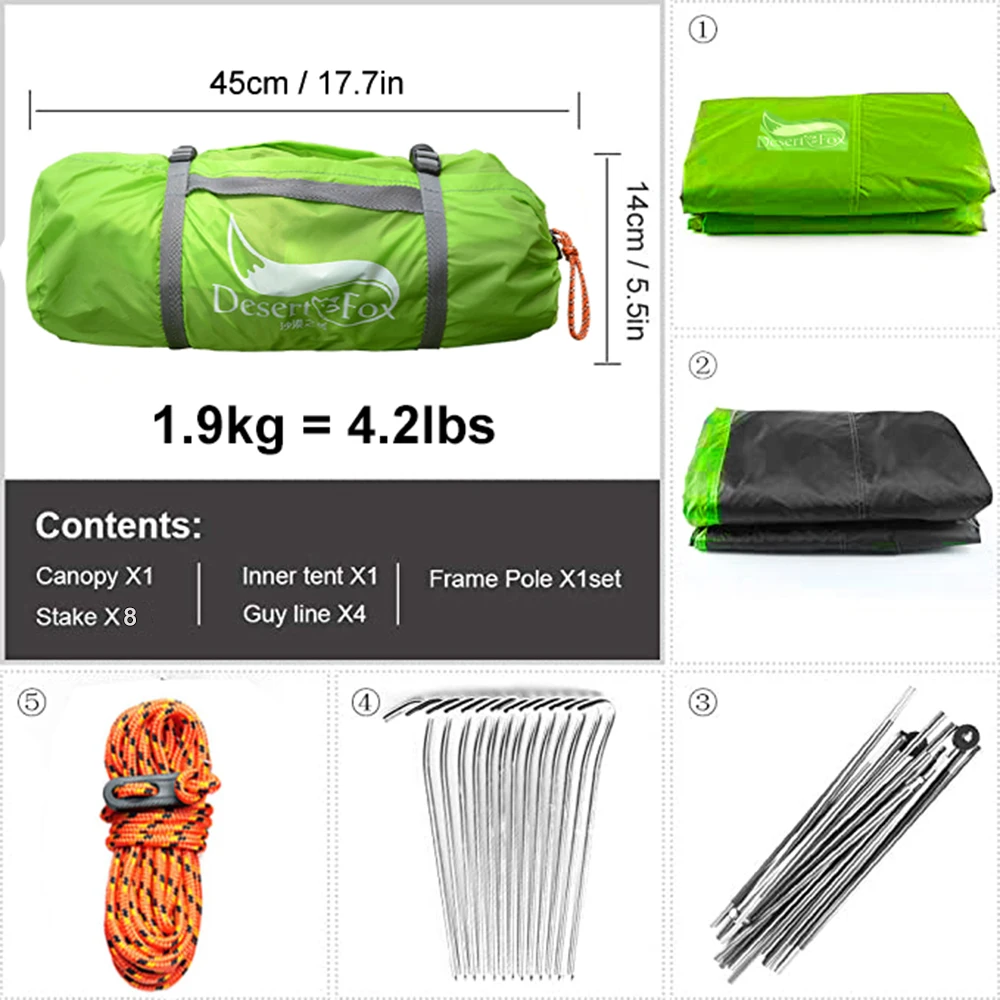
Weather Protection and Enhanced Livability
Vestibules significantly improve tent livability by providing crucial weather protection for both gear and occupants. This sheltered space transforms how you interact with your environment during challenging weather conditions.
Wind Protection
When camping in exposed locations:
* Vestibules break direct wind that would otherwise hit the tent entrance
* They create a protected space for entering and exiting during gusty conditions
* The buffer zone reduces wind-driven rain from entering the main tent
Rain and Snow Management
During precipitation events:
* Vestibules prevent rain from directly entering the tent when doors are opened
* They provide drainage paths away from the tent entrance
* Snow accumulation is kept away from the main sleeping area
* Tent zippers and fabric stay drier, extending their lifespan
Microclimate Benefits
The vestibule creates a transitional temperature zone:
* In cold conditions, it provides a buffer between frigid outdoor air and warmer tent interior
* During hot weather, partially opened vestibules allow for improved ventilation without full exposure
For those frequently camping in variable conditions, understanding how vestibules enhance weather protection is essential. Many backpackers specifically seek waterproof tents with strategic vestibule designs that maximize protection while maintaining accessibility and comfort.
Ventilation Management: Reducing Condensation
Effective ventilation is crucial for comfortable nights in the backcountry, and vestibules play a key role in managing airflow and reducing condensation. The strategic use of vestibule doors and vents can dramatically improve your tent’s internal environment.
In humid conditions, condensation can quickly accumulate inside a tent as warm breath meets cold tent walls. A properly configured vestibule helps mitigate this problem by:
- Creating a buffer zone where some moisture can condense before reaching the sleeping area
- Providing adjustable ventilation options through partial door openings
- Allowing for cross-airflow when tents have dual vestibules
- Separating wet gear (which releases vapor as it dries) from the sleeping compartment
During warmer weather, fully opening vestibule doors while keeping the inner tent door closed provides excellent ventilation while maintaining bug protection. In colder conditions, even slight vestibule ventilation can significantly reduce interior condensation without creating uncomfortable drafts.
For those camping in particularly humid environments like dense forests or near water sources, understanding condensation management techniques can make the difference between waking up in a comfortable dry tent versus one with moisture-soaked walls.
Cooking in Vestibules: Safety Considerations and Best Practices
⚠️ WARNING: Cooking inside or directly adjacent to your tent creates serious risks of carbon monoxide poisoning and fire. This should only be considered in emergency situations with extreme caution.
While vestibules can provide protected cooking space during inclement weather, this use requires careful consideration and strict adherence to safety protocols:
When Vestibule Cooking Should Be Avoided
- Strong wind conditions that could blow flames toward tent fabric
- Confined spaces with poor ventilation
- When using large or unstable stoves
- If alternative protected cooking locations are available
Necessary Safety Precautions
- Maintain maximum ventilation by keeping vestibule doors fully open where possible
- Place the stove on a stable, non-flammable surface at the outermost edge of the vestibule
- Maintain at least 12 inches (30 cm) clearance between the flame and any tent fabric
- Never leave a stove unattended, even momentarily
- Keep all fuel containers outside the vestibule and away from the stove
- Consider wind direction and position yourself to monitor both stove and surroundings
In most situations, safer alternatives exist, such as cooking in natural sheltered areas, using a separate ultralight tarp as a dedicated cook shelter, or preparing no-cook meals during severe weather.
For winter camping where cooking shelter becomes more critical, some four-season tents with spacious vestibules offer better-ventilated options, though safety protocols must still be strictly followed.
Types of Vestibules: Matching Design to Your Needs
Vestibule designs vary significantly across tent models, each offering distinct advantages for different backpacking scenarios:
| Vestibule Type | Best For | Typical Weight | Key Advantages |
|---|---|---|---|
| Front Entry | Solo campers, minimalists | 4-6 oz (113-170 g) | Simple design, lightweight |
| Side Entry | Easier access, couples | 6-8 oz (170-227 g) per side | Better access when sharing tent |
| Dual Vestibules | Shared tents, extended trips | 10-14 oz (283-397 g) total | Individual storage, multiple entry points |
| Extended/Oversized | Base camping, poor weather | 10-16 oz (283-454 g) | Maximum protected space, possible cooking area |
Front vestibules typically extend from the head end of the tent, creating a single protected entry point. While lightweight and simple, they can make access awkward when the tent is at full capacity.
Side vestibules provide more intuitive entry and exit, especially in two-person tents where each camper has their own door and storage area. This prevents climbing over your partner for midnight bathroom trips.
Some innovative designs feature adjustable or modular vestibules that can be configured based on weather conditions and space needs. This flexibility helps balance weight against functionality for specific trips.
For those interested in maximizing protected space, exploring tent designs featuring expanded vestibules can provide insights into how different configurations affect overall livability.
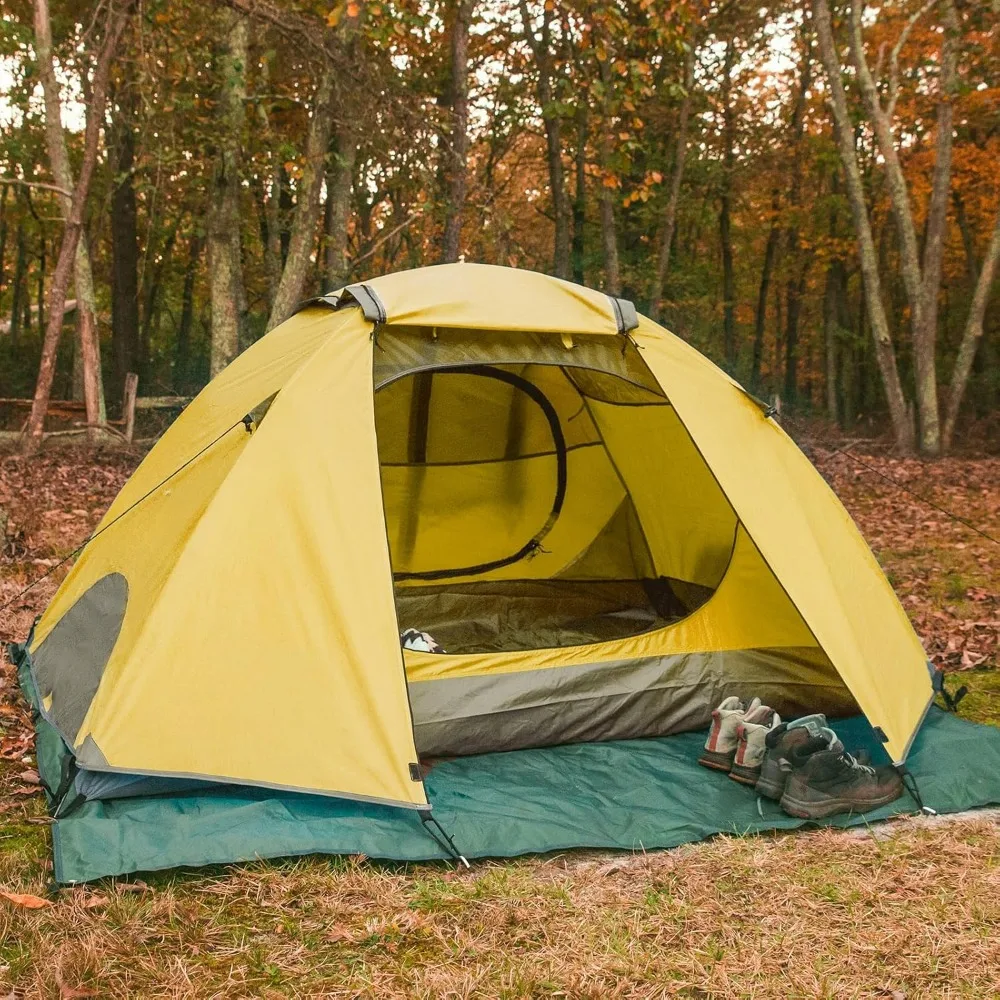
Is a Vestibule Worth the Extra Weight?
For weight-conscious backpackers, every ounce matters. Does a vestibule justify its weight penalty? Let’s analyze the tradeoff:
Q: How much weight does a vestibule actually add?
A: A standard vestibule typically adds 4-10 oz (113-283 g) to a tent’s total weight, depending on size and design. This represents roughly 5-15% of a lightweight backpacking tent’s total weight.
Q: When is this weight penalty most justified?
A: Vestibules provide the greatest value during:
* Extended trips where gear organization becomes more critical
* Locations with frequent precipitation or heavy dew
* Colder conditions when keeping gear dry is essential
* When sharing a tent, as they effectively expand usable space
Q: When might you skip a vestibule?
A: Ultralight enthusiasts might forgo vestibules when:
* Making short trips in reliably dry climates
* Every ounce is critical for long-distance thru-hiking
* Alternative lightweight shelter is available for gear (like pack covers)
Many lightweight backpacking tents now incorporate vestibules with minimal weight penalties through innovative design and materials. Understanding what constitutes appropriate backpacking tent weight helps put the vestibule weight consideration into proper perspective.
The consensus among most experienced backpackers is that vestibules typically offer value that outweighs their weight penalty, particularly when weather conditions are uncertain.
Lightweight Backpacking Tent, Ultralight Backpacking Tent, Ultralight Bivy Tent
Ultralight Single Person Camping Tent with Aluminum Poles for 3-Season Backpacking Waterproof DesignPrice range: $94.88 through $326.82 Select options This product has multiple variants. The options may be chosen on the product pageLightweight Backpacking Tent, Ultralight Backpacking Tent, Waterproof Backpacking Tent
$391.05 Select options This product has multiple variants. The options may be chosen on the product pageHeavy Duty 4 Season Tent, Mountaineering Tent, Winter Camping Tent
$870.40 Select options This product has multiple variants. The options may be chosen on the product pageCompact Backpacking Tent, Lightweight Backpacking Tent, Waterproof Camping Tent
$335.52 Select options This product has multiple variants. The options may be chosen on the product pageUltralight Backpacking Tent, Ultralight Dome Tent, Winter Camping Tent
Price range: $369.63 through $370.07 Select options This product has multiple variants. The options may be chosen on the product pageCamping Tent with Vestibule, Waterproof Camping Tent
Price range: $407.89 through $479.48 Select options This product has multiple variants. The options may be chosen on the product page
Creative Additional Uses for Vestibules
Beyond standard functions, resourceful backpackers have developed numerous creative applications for tent vestibules:
Pet Accommodation – A vestibule provides a protected sleeping area for four-legged companions, keeping them close but out of your sleeping space.
Photography Blind – Wildlife photographers can use the vestibule as a minimalist blind for early morning photography without fully exposing themselves to the elements.
Private Changing Room – In crowded camping areas, vestibules offer privacy for changing clothes, especially valuable in high-traffic backcountry campsites.
Gear Drying Station – Rigging small cordage across the vestibule creates an improvised clothesline for drying socks, gloves, and other small items overnight.
Field Repair Workshop – The protected space makes an ideal spot for equipment maintenance and repairs, keeping small parts contained and protected from wind.
Sheltered Rest Spot – During day hikes from a base camp, returning to a tent with a vestibule provides a quick sheltered spot to rest without disturbing your sleeping area.
Star-Gazing Portal – With the outer door open and inner door closed, vestibules create a protected viewing platform for night sky observation while remaining bug-free.
These creative applications demonstrate how vestibules transform basic shelter into functional living space in the backcountry, enhancing comfort and convenience beyond their standard functions.
How To Maximize Your Vestibule Space: Organization Tips
Strategic organization transforms even modest vestibules into highly functional spaces. Follow these practical tips to maximize every inch of your vestibule:
Implement Vertical Storage – Use the sloped vestibule walls by hanging lightweight items from small carabiners or cord loops attached to seams or tabs.
Create Zones – Establish dedicated areas for dirty items (farthest from entrance), cooking equipment (near door for ventilation), and frequently accessed items (within easy reach).
Use Compression Sacks – Compress soft items like rain gear and extra clothing to minimize the space they occupy while maintaining waterproof protection.
Protect Ground-Contact Items – Place a small section of groundsheet or sit pad under items that would otherwise rest directly on potentially wet ground.
Position Boots Strategically – Store boots upside-down and slightly elevated to prevent water collection and promote drying overnight.
Maintain Access Lanes – Always preserve a clear path to the inner tent door for nighttime bathroom trips without disturbing stored gear.
For tents lacking built-in vestibules, exploring options to add aftermarket vestibules to existing shelters can significantly enhance functionality without requiring a complete tent replacement.
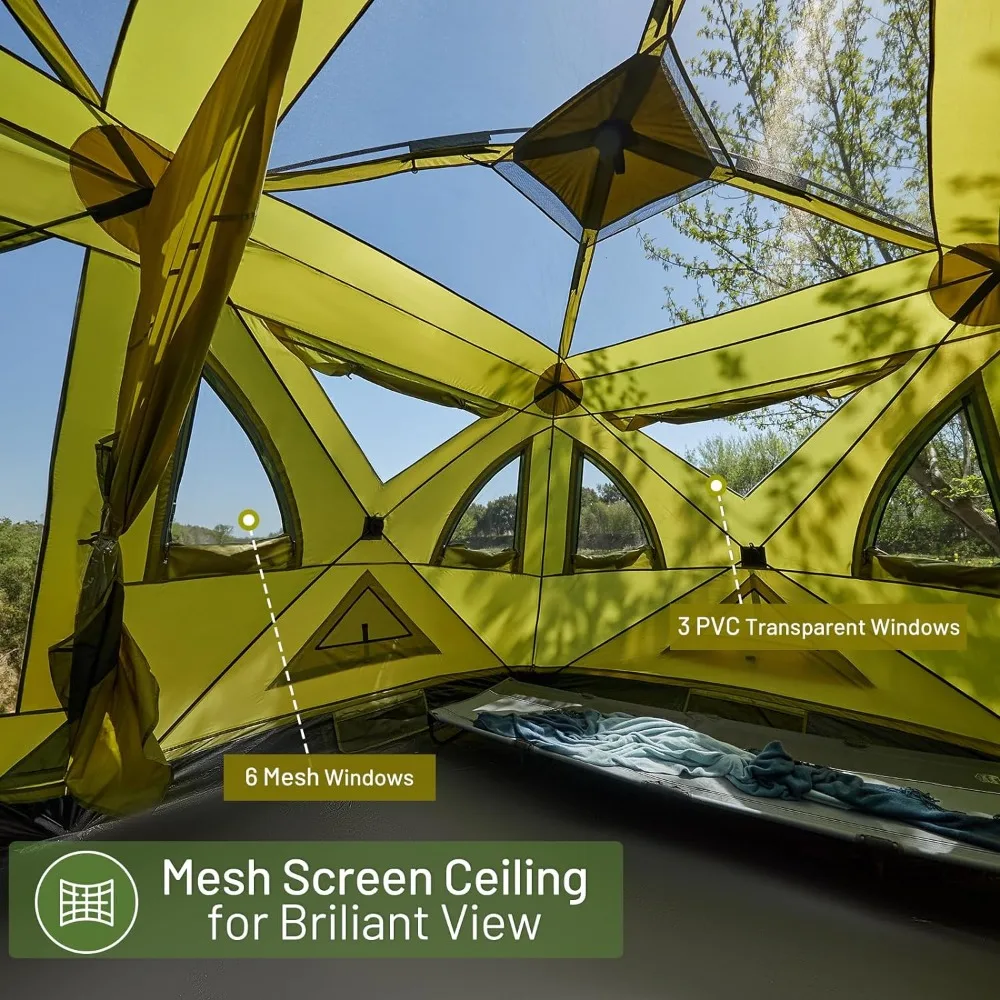
Why Most Serious Backpackers Consider Vestibules Essential
For those who regularly venture into the backcountry, vestibules have evolved from a luxury feature to an essential component of a complete shelter system. This transformation reflects the practical experience gained through countless nights outdoors.
The modest weight penalty of 4-10 ounces (113-283g) delivers disproportionate benefits in versatility, gear protection, and living comfort. While ultralight enthusiasts might occasionally sacrifice vestibules for absolute minimum weight, most return to vestibule-equipped shelters after experiencing the limitations of vestibule-free designs in challenging conditions.
As one experienced Appalachian Trail section hiker observed: “I started with a minimalist tent to save weight, but after one week of rain, I gladly would have carried an extra pound for a proper vestibule.” This sentiment echoes throughout the backpacking community.
The difference between tents with well-designed vestibules and those without becomes most apparent during extended trips and inclement weather – precisely when shelter functionality matters most. At Explore Elements, we’ve found that backpackers who prioritize vestibule features consistently report higher satisfaction with their wilderness experience, particularly when conditions turn challenging.

